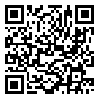Volume 7, Issue 4 (1-2021)
J Jiroft Univ Med Sci 2021, 7(4): 480-488 |
Back to browse issues page
Download citation:
BibTeX | RIS | EndNote | Medlars | ProCite | Reference Manager | RefWorks
Send citation to:



BibTeX | RIS | EndNote | Medlars | ProCite | Reference Manager | RefWorks
Send citation to:
Joodi M, Banaeifar A, Eizadia M, Arshadi S. The changes of serum insulin in response to resistance training with emphasis on FOXO1 in pancreas of diabetes rats. J Jiroft Univ Med Sci 2021; 7 (4) :480-488
URL: http://journal.jmu.ac.ir/article-1-417-en.html
URL: http://journal.jmu.ac.ir/article-1-417-en.html
1- Ph.D student of Exercise physiology, Islamic Azad University, South Tehran Branch, Tehran, Iran
2- Associated Professor of Exercise Physiology, Islamic Azad University, South Tehran Branch, Tehran, Iran ,alibanaeifar@yahoo.com
3- Assistant Professor of Exercise Physiology, Islamic Azad University, Saveh Branch, Saveh, Iran
4- Assistant Professor of Exercise Physiology, Islamic Azad University, South Tehran Branch, Tehran, Iran
2- Associated Professor of Exercise Physiology, Islamic Azad University, South Tehran Branch, Tehran, Iran ,
3- Assistant Professor of Exercise Physiology, Islamic Azad University, Saveh Branch, Saveh, Iran
4- Assistant Professor of Exercise Physiology, Islamic Azad University, South Tehran Branch, Tehran, Iran
Abstract: (4047 Views)
| Introduction: Decreased insulin sensitivity and its secretion of pancreas increase the risk of developing type 2 diabetes (T2D). In the present study it was aimed to assess the effect of resistance training on Forkhead box protein O1 (FOXO1) expression in pancreas tissue, serum insulin, and insulin sensitivity in obese rats with T2D. |
Materials and Methods: T2D was induced by high fat diet and Streptozotocin (STZ) in 14 male wistar rats, then they were randomly divided into exercise (resistance training, 8 weeks, n = 7) and control (n = 7) groups. Resistance training was performed 5 sessions a week in the form of climbing a ladder with resistance. Glucose, insulin, insulin sensitivity, beta cell function and FOXO1 expression in pancreas tissue were measured, 48 hours after the last training exercise, and compared between 2 groups. Independent t-test was run for comparing variables between groups.
Results: PCOS rats showed significant anxiety-like behaviors in the elevated plus maze (decrease in open arm time and entries percent). Open field test also showed anxiety in PCOS rats compared with the control animals (decrease in the inner time, p<0.05). Exercise protocol in PCOS rats significantly reduced anxiety in both tests.
Conclusion: Resistance training resulted in significant increase in serum insulin (p<0.05), insulin sensitivity (p<0.005), beta cell function (p<0.001) and FOXO1 expression in pancreas tissue (p<0.05) and decrease in fasting glucose (p<0.001) in comparison with the control group.
Conclusion: Decreased blood glucose in response to resistance training can be attributed to both increased insulin sensitivity and beta cell function. Based on the available evidence, increased serum insulin and beta cell function may be rooted in increased FOXO1 expression, although further studies are required in order to accurately identify the mechanisms responsible for these changes.
Results: PCOS rats showed significant anxiety-like behaviors in the elevated plus maze (decrease in open arm time and entries percent). Open field test also showed anxiety in PCOS rats compared with the control animals (decrease in the inner time, p<0.05). Exercise protocol in PCOS rats significantly reduced anxiety in both tests.
Conclusion: Resistance training resulted in significant increase in serum insulin (p<0.05), insulin sensitivity (p<0.005), beta cell function (p<0.001) and FOXO1 expression in pancreas tissue (p<0.05) and decrease in fasting glucose (p<0.001) in comparison with the control group.
Conclusion: Decreased blood glucose in response to resistance training can be attributed to both increased insulin sensitivity and beta cell function. Based on the available evidence, increased serum insulin and beta cell function may be rooted in increased FOXO1 expression, although further studies are required in order to accurately identify the mechanisms responsible for these changes.
Type of Study: Research |
Subject:
Medical Sciences / Sports Medicine
Received: 2020/08/6 | Accepted: 2020/10/13 | Published: 2020/12/24
Received: 2020/08/6 | Accepted: 2020/10/13 | Published: 2020/12/24
Send email to the article author
| Rights and permissions | |
 |
This work is licensed under a Creative Commons Attribution-NonCommercial 4.0 International License. |




